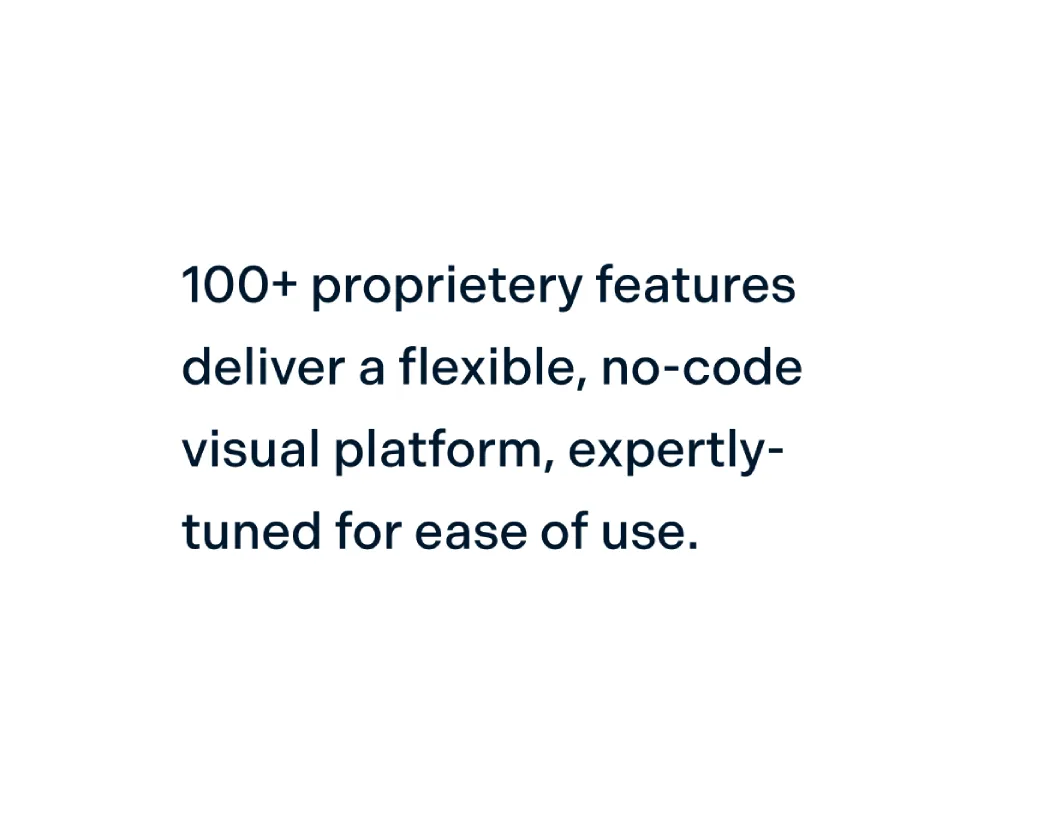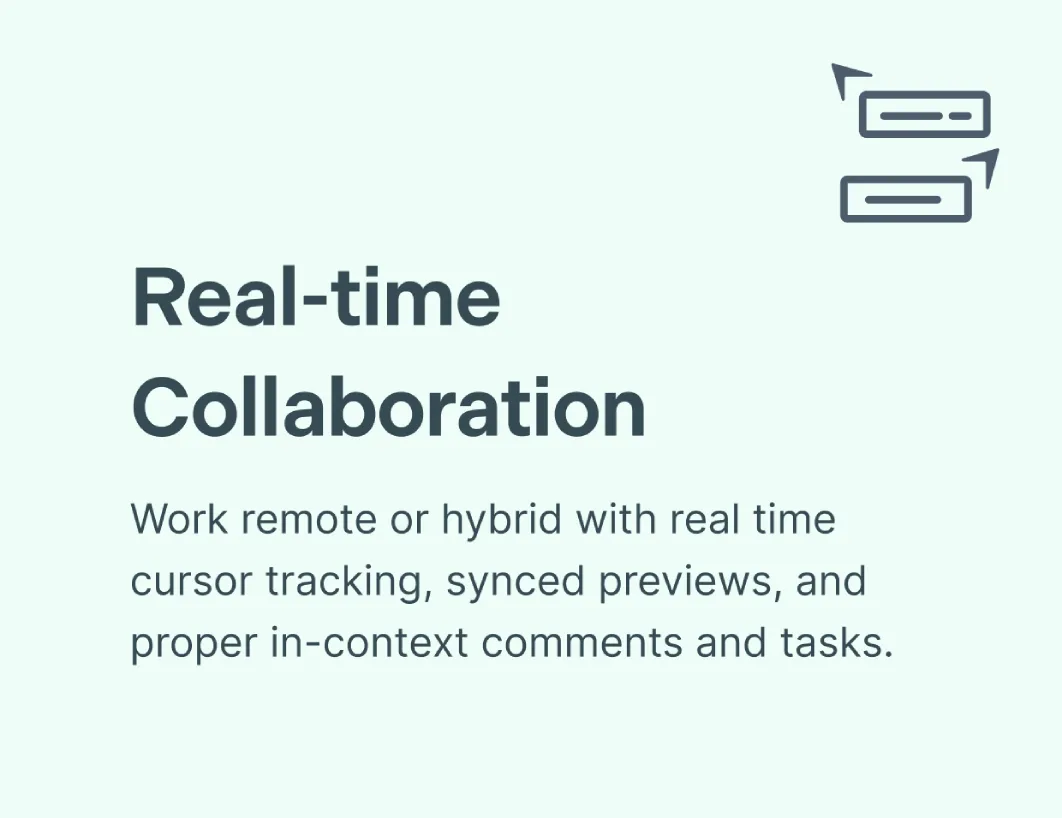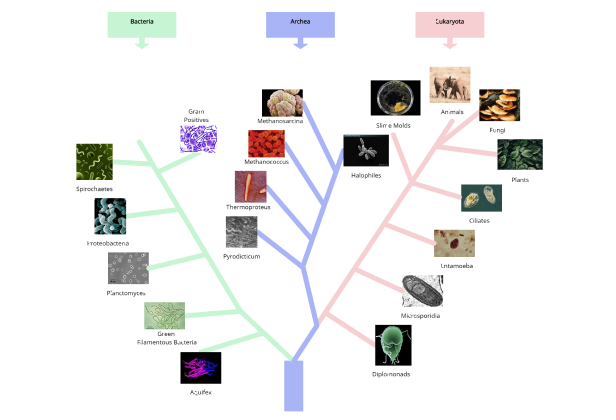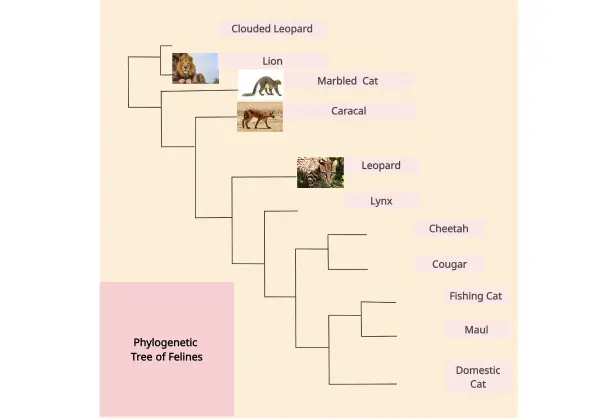Phylogenetic Tree Maker
Better Understand Phylogenetic Relationships
Effectively visualize and identify the evolutionary relationships among various biological species.
Easy visual canvas to visualize phylogenetic relationships
Multiple phylogenetic tree templates to start quickly
PNG, SVG, JPEG, and PDF image export for sharing and printing

 Diagramming
Diagramming Visual Collaboration
Visual Collaboration Org Chart
Org Chart


Create Detailed Phylogenetic Trees in Minutes
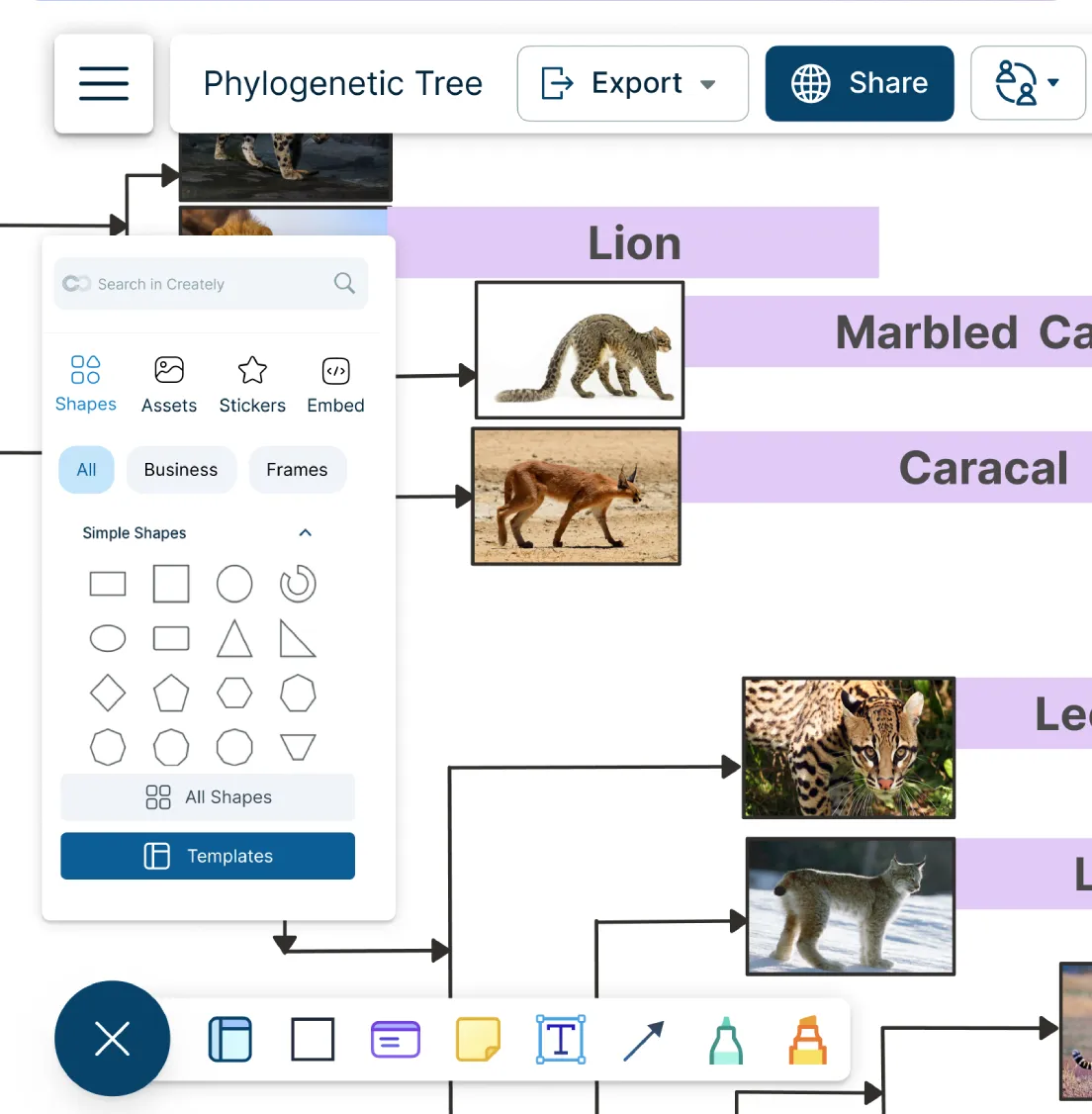
Multiple professional templates to study and analyze relationships of organisms.
Import images, vectors, and more to create informative phylogenetic trees.
Freehand drawing and highlights to sketch as you detail and analyze organisms.
Easy-to-use dynamic connectors to easily draw evolutionary connections.


Centralize Your Research Data

Add docs, attachments, links and more via the notes panel for easier analysis.
Infinite canvas that scales up to 1000s of items to gather research data around species.
Built-in presentation tools to organize information, share and present to others.
Collaborate in Real-Time, Anytime, Anywhere
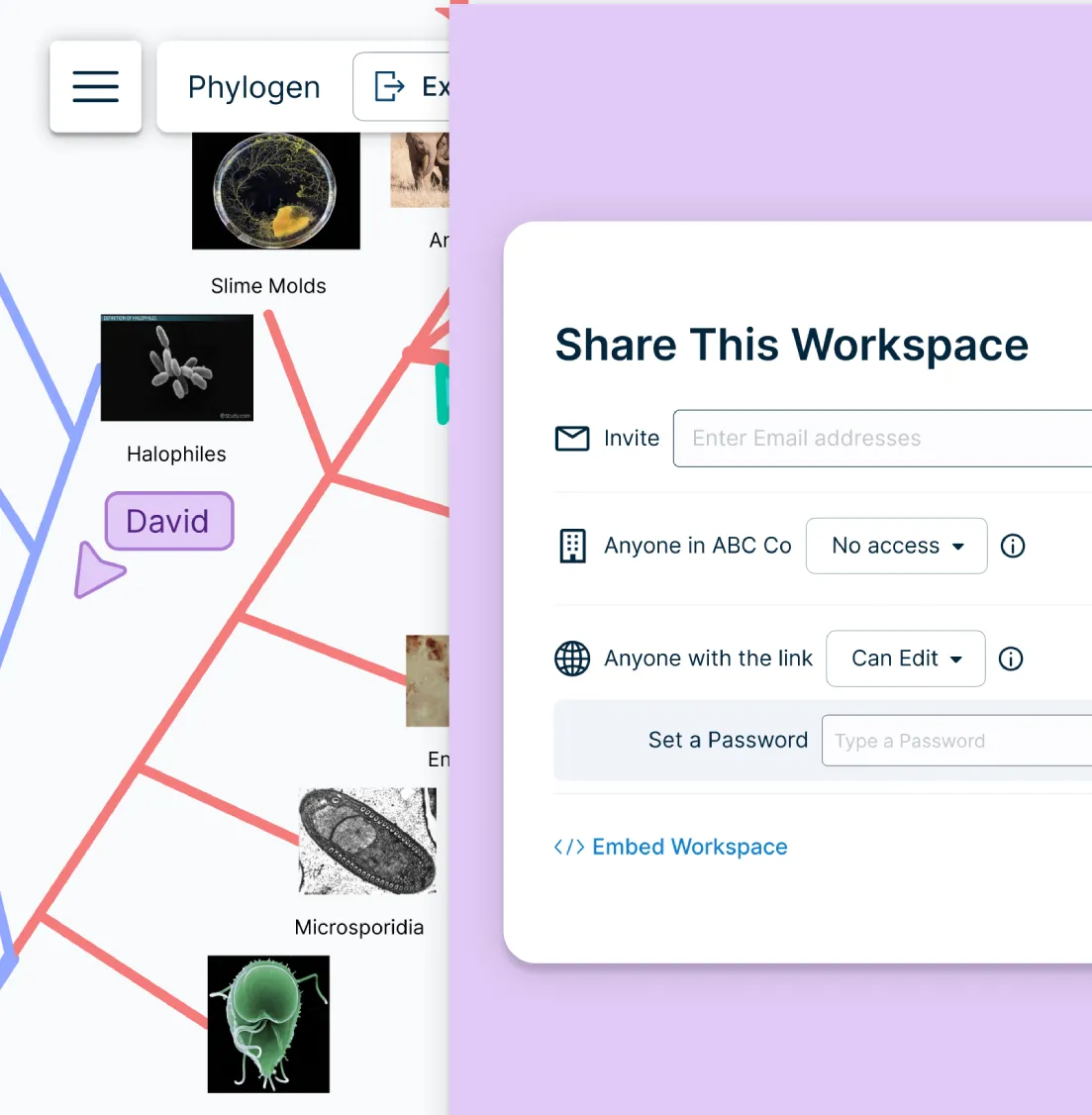
Real-time cursors to work with students, teachers, or researchers on a shared canvas.
Comment with context and have discussions on the same canvas. Async!
Multiple access levels and roles to streamline managing, sharing, editing, and reviewing.

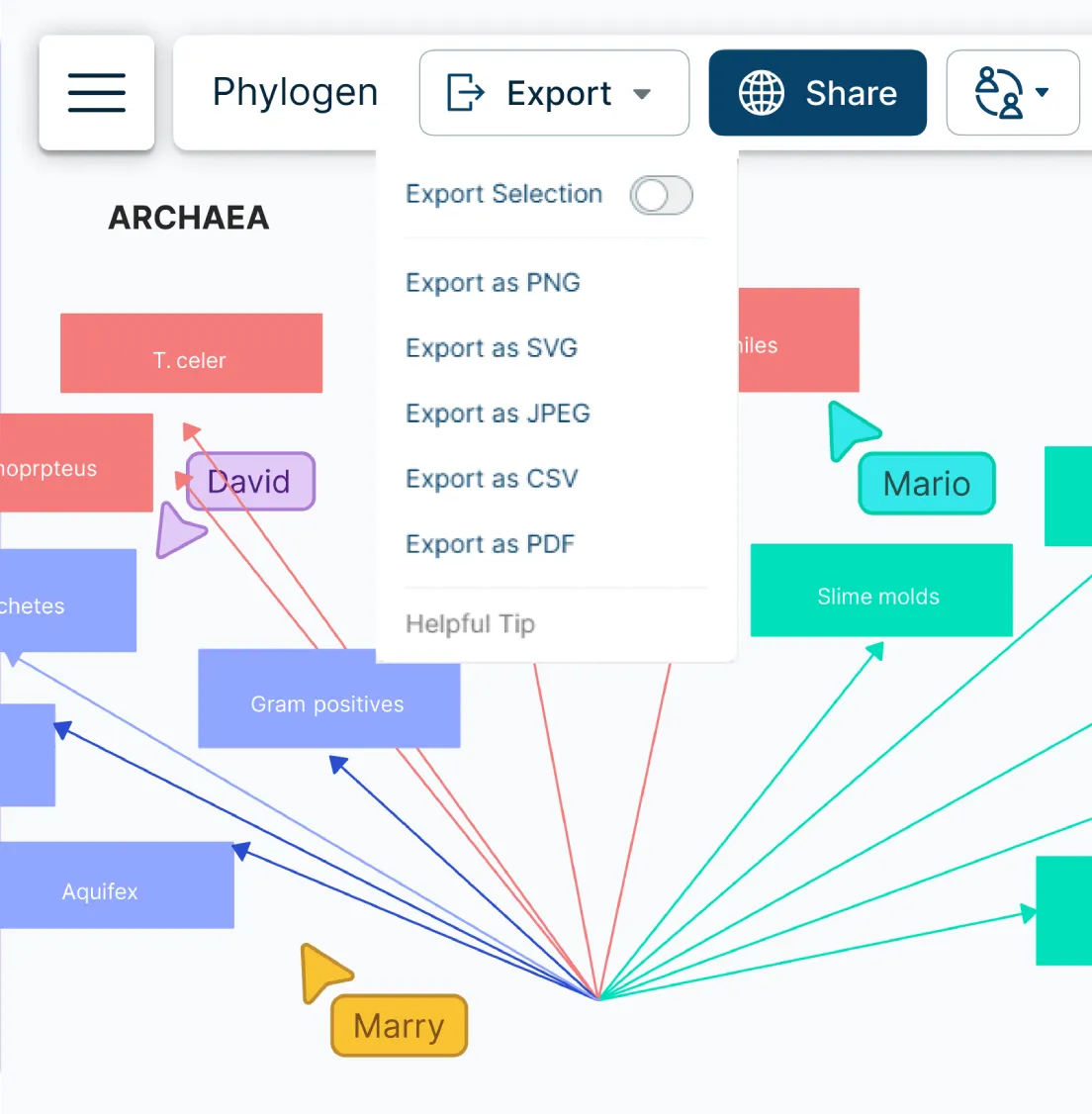
Expand on Phylogenetic Relationships

Export as PDF, SVG, PNG, and JPEG. Build multi-page docs and reports using frames and PDFs.
Share with your entire team or guests using an email or link invite.
Integrate with your favorite tools via Creately plugins for Google, Microsoft, Slack, Zoom and more.
What Is a Phylogenetic Tree Maker?
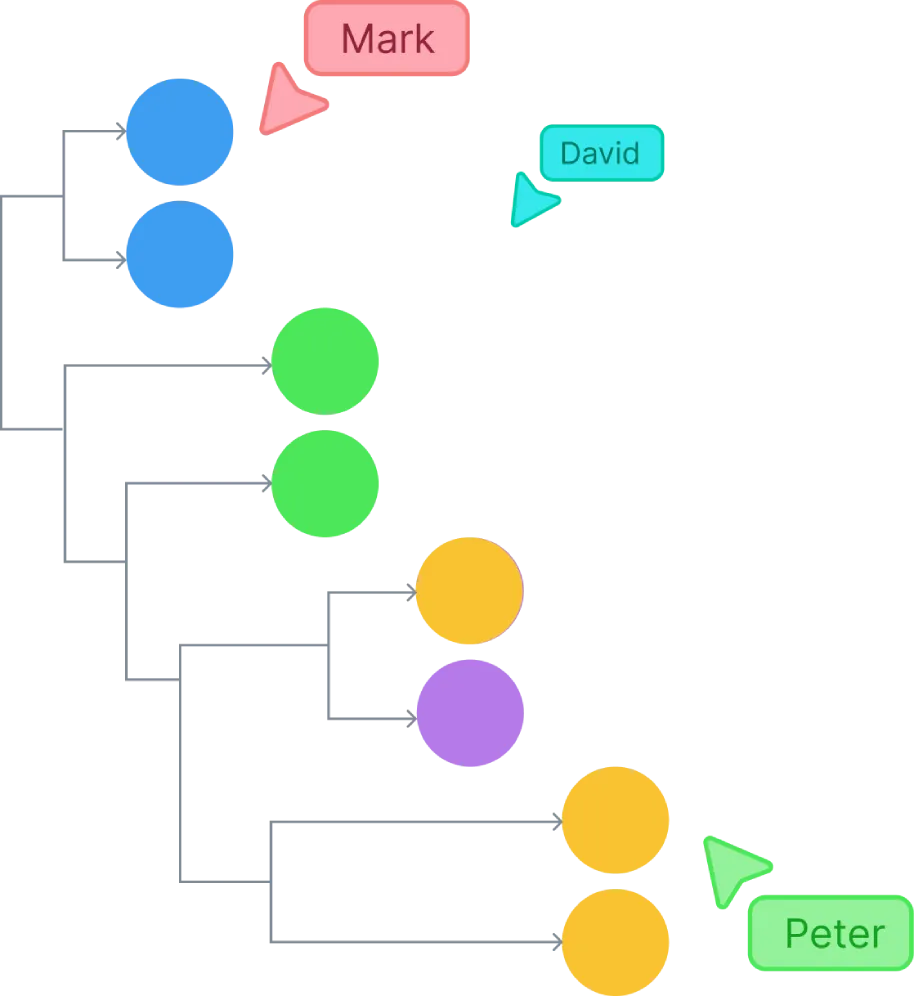
How to Collaborate Around a Phylogenetic Tree in Creately?
- Share the workspace:
Share the workspace with your team, students and colleagues. Invite them to edit the workspace via email or a link invite.
- Brainstorm and discuss:
Discuss the structure and content of the phylogenetic tree with the team. Hold dynamic discussions through Creately’s Microsoft Teams integration.
- Collaborate to build the tree:
Divide tasks among team members via the task panel and track progress. Use smart notifications to stay on top of changes and updates effortlessly.
- Use full version history:
Use full version history to manage changes made by each member and to revert back if needed.
- Visualize the tree:
Visualize the tree in different perspectives to highlight features such as geographic distribution, ecological traits, or genetic traits. Include additional information to each element via the notes and data panels. Attach docs, links, references, images and more.
- Publish or share:
Download as a PDF, PNG, SVG or JPEG or get an embed link via the embed panel accessible through ‘share’. To share the workspace, simply add the team members’ emails and invite them to collaborate.
Create a Phylogenetic TreeHow to Make a Phylogenetic Tree with Your Team?
Define the scope and research question
Discuss what the phylogenetic tree should answer and decide which organisms will be included. Use a shared workspace to brainstorm, sketch, and assign roles.
Gather data
Collect DNA or protein sequences and morphological characters. Organize them using tables and notes.
Align sequences
Align DNA or protein sequences to identify matches and mismatches. Bring all data into the shared workspace for comparison.
Build the tree
Use a template or draw from scratch. Label branches with taxonomic names and connect them with intelligent diagramming tools. Add images if needed.
Evaluate and refine the tree
Compare with existing trees and refine by adding more data or adjusting models.
Cite and acknowledge
As the final touch, properly cite any data or work that was used when creating the tree. Make sure to acknowledge the contributions of each team member.
Easily Create Phylogenetic Trees Online with These Editable Templates
FAQs About the Phylogenetic Tree Maker in Creately
Can I create both rooted and unrooted phylogenetic trees?
Is Creately’s phylogenetic tree maker free?
Is it possible to collaborate with others on the same phylogenetic tree?
How can I import images to the canvas?
Can I add references, notes, or supporting data to my tree?
Can I export or print my phylogenetic tree?







